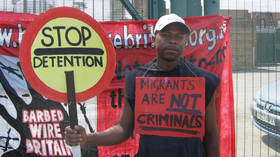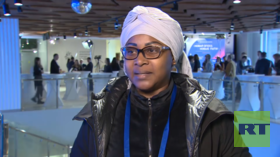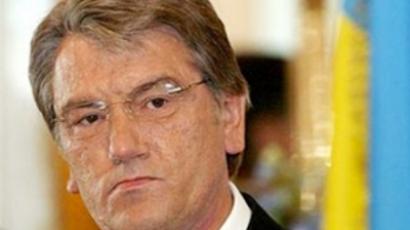Famine victims found alive and well in Ukraine
Residents of a small Ukrainian village have been shocked to find their names on a list of deceased. They feature alongside victims of the great famine of the 1930s, known as the Holodomor.
When the local library received a copy of a recently compiled Book of Memory containing the names of all victims of the Holodomor, they were surprised to find living villagers listed amongst the deceased.
At the stroke of a pen, Andriyashevka in eastern Ukraine has become a village of the dead, but this isn't the only instance of such falsifications occurring in Ukraine.
Leonid and Natalya Melnyk are amongst the “victims”. They are particularly angry that a church memorial service was conducted on their behalf.
“We are ordinary farmers. We have no opinion either way on the Holodomor. But we were upset to be declared dead,” Leonid says.
As Andriyashevka residents get on with their lives, the scope of the scandal has grown.
What at first sight appeared as an unfortunate but unintentional error, has instead sparked a region-wide controversy, and once again questions are being asked about what Holodomor was and what it was not.
According to estimates, between two to eight million died in the Great Famine throughout the Soviet Union in less than a year.
The 1932 crop was poor and new collective farms were inefficient. Crucially, government officials requisitioned grain from the farmers, often not leaving them enough survive.
Ukraine suffered the worst. In recent years, Ukrainian historians and politicians have mounted a campaign to recognize that this was not an accident. They say that the Holodmor – Ukrainian for “Death by Famine” – was genocide, a deliberate policy of Josef Stalin against the Ukrainian people.
“Unlike everywhere else, in Ukraine it wasn't just the grain that was confiscated, it was all food. It was a special operation by the secret police, and the death rates were ten times higher than elsewhere. Ukraine is a special case,” explains Kiev-based historian professor Stanislav Kulchitsky.
Not everyone agrees. Critics claim that the Holodomor is a case of an intentional stoking of patriotic sentiment by nationalists designed to drive a wedge in Kiev's relationship with Moscow.
Russia refuses to recognize Holodomor as separate from the Great Famine in the whole of the USSR.
While few deny the existence of Holodomor, this is not the first time the specifics have been questioned. Earlier this year, an exhibition of Holodomor photos was found to contain images from America’s Great Depression.
“The Book of Memory debacle is not a one-off. When truth is manipulated to suit a politician or an ideology there will always be inaccuracies and mistakes,” believes Ukrainian Parliament deputy Vadim Kolesnichenko.
The Book of Memory is now being corrected, but the Holodomor remains a hot topic. As long as it stays that way, the remembrance of the millions who suffered unquestionably will remain a pawn in an ideological and political battle.
Read also Ukraine's theater of the absurd makes president Yushchenko lose temper













